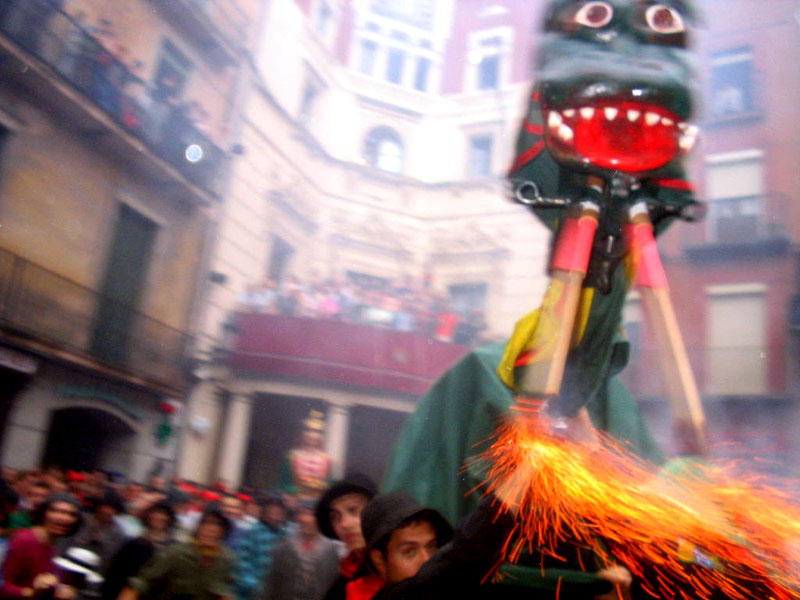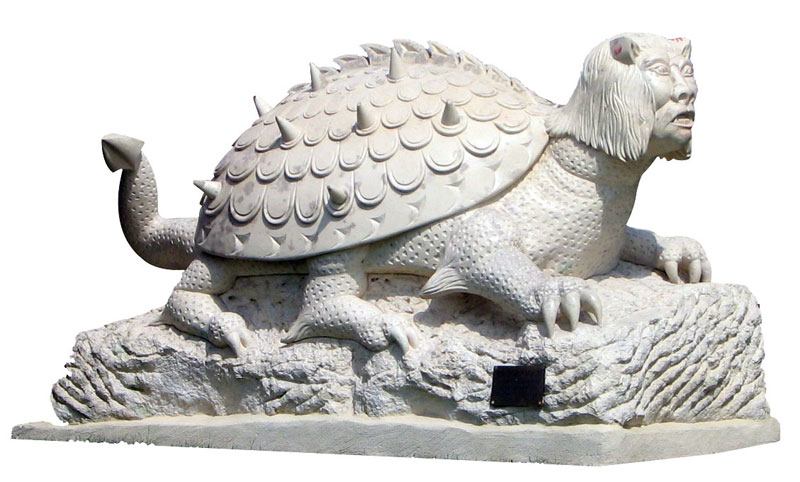Dragon Mythology: Guita Xica
Continuing our series on dragon mythology, we are going to take a look at another creature in Spanish folklore, the Guita Xica.
La Guita Xica
La Guita Xica is a dragon found in the legends of Catalonia beginning in 1890. Originally La Guita Xica was regarded as a demon, but over the past 100 years or so it has come to represent a spirit of protection that defends the people of Catalonia. At the Eucharist’s festivals of Patum de Berga, large dragon statues are built in the town squares, spouting fireworks and being paraded around.
 PHOTO: Patum, fiesta de Berga, Cataluña, España. Declarada patrimonio de la humanidad por la UNESCO.
PHOTO: Patum, fiesta de Berga, Cataluña, España. Declarada patrimonio de la humanidad por la UNESCO.
Author: Albert Vilalta. This file is licensed under the Creative Commons Attribution 2.0 Generic license.
The dragon had many names, including Guita Boja, La Guita Xica, Mulaguita, La Mulassa, Mula Fera, and Mula Guita. Originally it was named Mulassa, then Mulaguita, and finally became Guita by the twentieth century. The name La Mulassa comes from an older term, mulassas, meaning ‘monstrous mules’. In Catalan mythology this terminology referred to mule-dragon hybrids.
As you can see, La Guita Xica was a half-mule and half-dragon creature. In the mountains of Catalan, the mule was an important animal. It was a strong, practical creature that was well utilised, however mules are also known for their disruptive temperament, which was difficult enough to consider domestication undependable.
La Guita Xica has a very long neck and sharp fangs with green skin. Many people feel that the Guita Xica looks similar to the Loch Ness Monster due to its long neck!
Tarasca
In Spanish and Latin American mythology, La Guita Xica is known as a tarasca, a name for draconic creatures. The name tarasca comes from the French Tarasque, derived from the town Tarascon, situated in Provence, France. The origin of the Tarasca is found in a legend about Saint Martha.
Described as dragon-like, the creature had six short legs similar to a bear, the body of an ox topped with a turtle shell, and a scale-covered tail with a scorpion’s stinger on the end. It also had the head of a lion with a horse’s ears and a bad-tempered expression. Quite a creature indeed!

According to stories, the creature inhabited Tarascon and laid waste to the countryside far and wide. The King of Tarascon was understandably rather peeved at this so he attacked the dragon-type creature using his armies and weapons but success evaded him at every turn. However Saint Martha, whom had recently washed up on the shores of Provence, tamed the beast with her prayers and returned to the city with the beast subdued. That night the local people were frightened so they attacked the creature and it died on the spot without resistance. Later Saint Martha preached to the people and converted many of them to Christianity.
Dragon Lore
Thank you for reading about the Catalonian Guita Xica dragon and the Tarasca from Provence. This is just one in a series of dragon lore articles on Everything Dragon Shop. We hope to add more as time goes on!


